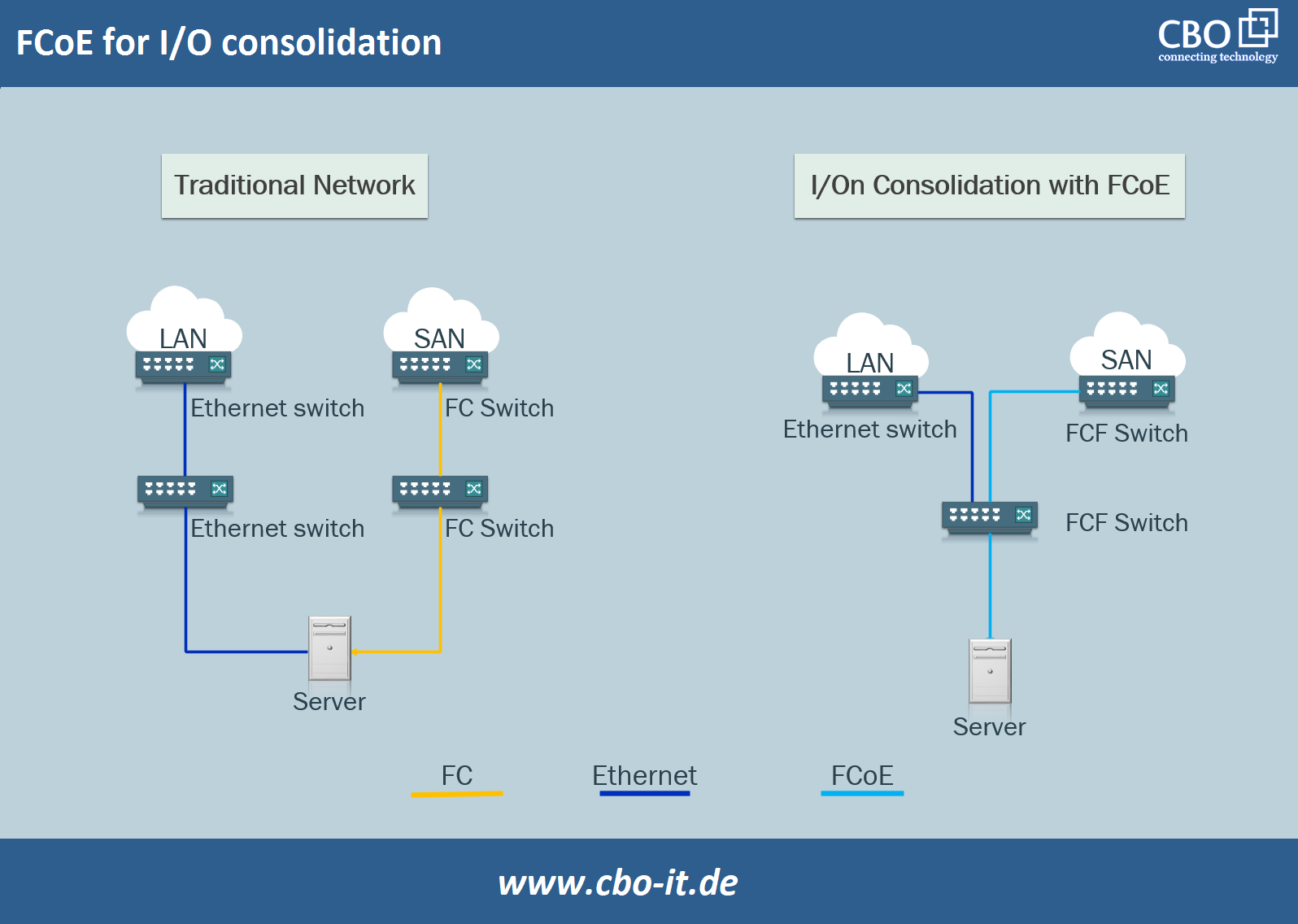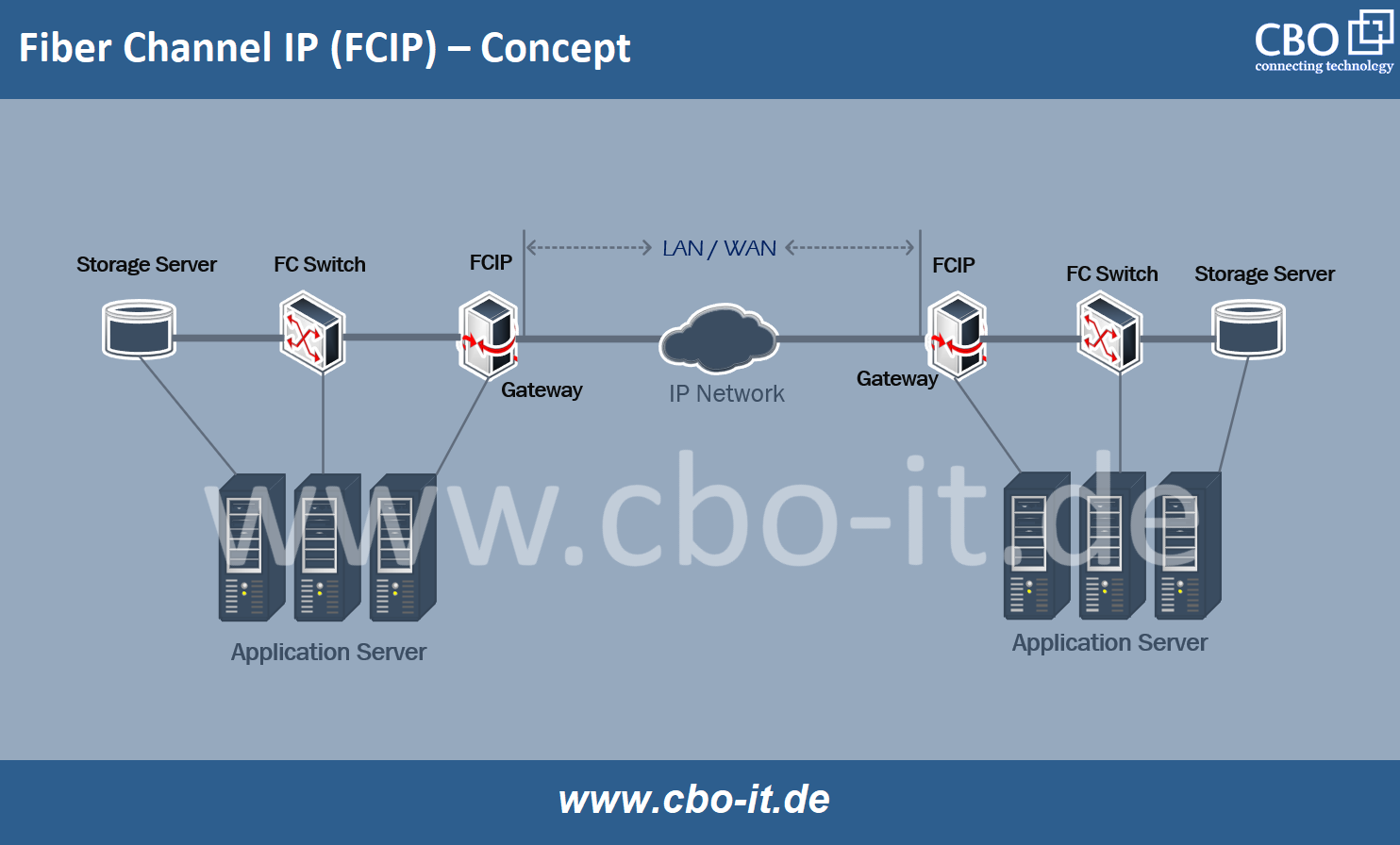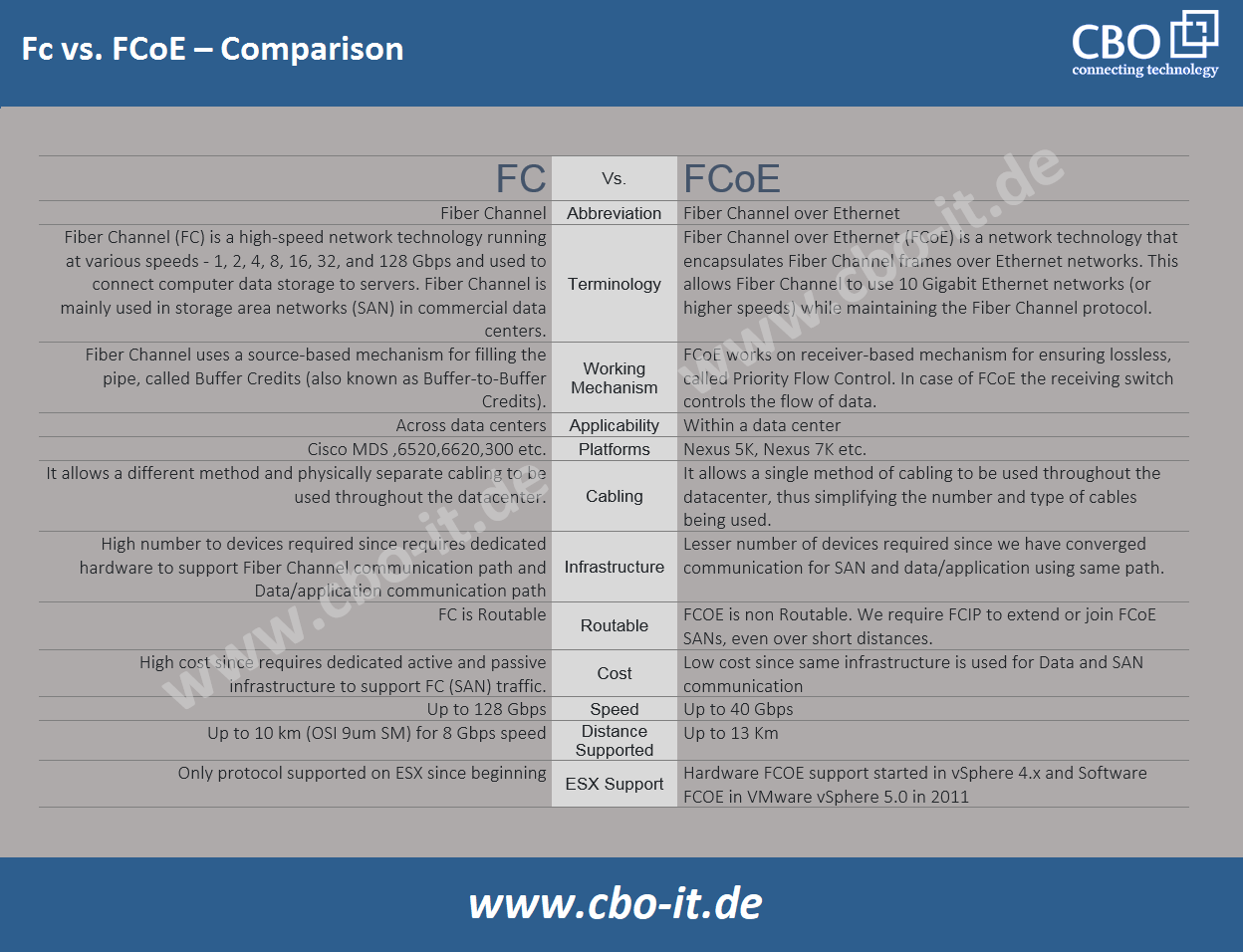Data management is vital for any enterprise and needs a robust, reliable, and strong design to cater to business operational requirements. Owing to this fact, storage area networks or SANs are growing in popularity. Besides providing centralized storage for extensive data, SANs offer quick and reliable access to various resources they contain.
We require different types of connections to deploy and achieve connectivity with a storage area network. In other words, with SAN as our storage mechanism, we must work with copper and fiber. Consequently, we will also need a bridge that can help us create a communication channel between our optical fiber and copper infrastructure.
Luckily, there are many ways, and we can use the most appropriate and feasible one to achieve connectivity between Ethernet and fiber channels, out of which FCIP and FCoE are widely considered. These two methods offer great flexibility and allow users to build and maintain cross-system communication. If you are not aware of either of these two communication models, don’t worry – we will discuss them in this post.
Storage Area Networks (SANs) are essential for businesses that store and access large amounts of data. SANs provide centralized storage, which can improve performance and security. Two main options to connect fiber channels and Ethernet are FCoE and FCIP.
FCoE (Fiber Channel over Ethernet)
FCoE converges storage protocols into a single interface, increasing speed and security. It consolidates I/O, reducing complexity and cable counts. FCoE operates directly over Ethernet, which makes it easy to deploy and manage.

FCoE is a good choice for networks that require high performance and low latency. It is also suitable for networks limited to a single data center. FCoE is easy to deploy and manage and can be used with existing Ethernet infrastructure.
Benefits of FCoE
Improved performance: FCoE can improve performance by reducing latency and increasing bandwidth.
Reduced complexity: FCoE consolidates storage protocols into a single interface, which reduces complexity and cable counts.
Increased security: FCoE is more secure than FCIP because it operates directly over Ethernet.
Easy to deploy and manage: FCoE is easy to deploy and manage, and it can be used with existing Ethernet infrastructure.
FCIP (Fiber Channel over IP)
FCIP allows FC SANs to be connected over IP networks, enabling data transfer across geographically dispersed locations. It consolidates input and output, replacing fiber links with Ethernet. FCIP transmits Fiber Channel frames over TCP or IP, which makes it more flexible than FCoE.

FCIP is a good choice for networks that connect SANs across multiple data centers. It is also a good choice for networks that require flexibility and scalability. FCIP can be used with various network topologies and can be routed over long distances.
Benefits of FCIP
Flexibility: FCIP is more flexible than FCoE because we can use SANs across multiple data centers.
Scalability: FCIP is more scalable than FCoE because it can connect a more significant number of devices.
Can be routed over long distances: FCIP can be routed over long distances, which makes it a good choice for connecting SANs in different locations.
Choosing the Right Protocol
The choice between FCoE and FCIP depends on the specific requirements of your network. Here is a table that compares the two protocols:

In addition to the factors discussed above, there are a few other considerations to keep in mind when choosing between FCoE and FCIP:
Cost: FCoE is typically less expensive than FCIP.
Security: FCoE is more secure than FCIP because it operates directly over Ethernet.
Scalability: FCIP is more scalable than FCoE because it can connect SANs across multiple data centers.
Conclusion
FCoE and FCIP are both robust protocols that can be used to connect fiber channels and Ethernet. The best choice for your network will depend on your specific requirements. By carefully considering the factors discussed in this blog post, you can decide which protocol suits you. Following are some critical points that need to be remembered in this regard:
- FCoE converges storage protocols into a single interface, increasing speed and security.
- FCIP allows FC SANs to be connected over IP networks, enabling data transfer across geographically dispersed locations.
- FCoE operates directly over Ethernet, while FCIP transmits Fiber Channel frames over TCP or IP.
- The functionality of FCoE extends to all network stages, while FCIP only works at the switch-to-switch stage.
- FCIP applies across all enterprise data centers using a storage system, while FCoE is limited within a data center
 English
English
 Deutsch
Deutsch
 Espaniol
Espaniol










